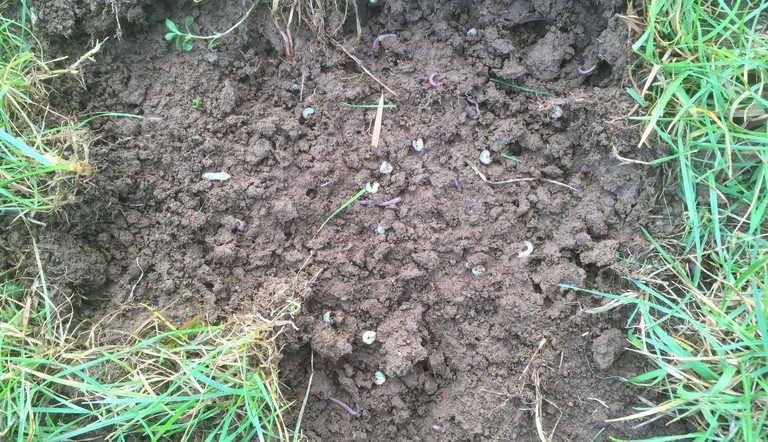
Pasture profitability risks being eaten away

Establishing good pasture, the lifeblood of a successful farming system, doesn’t come cheap. The last thing anyone wants to see is that hard work and investment being eaten away – from below.
With the danger period for grass grub damage upon us, Otago and Southland ADAMA Commercial Manager Damian MacKenzie says regular checks on pasture are vital. “Keep doing it. In a spade square just 2-3 larvae can indicate there’s a big problem.
“Grass grub and porina can reduce pasture dry matter production by up to 4,300 kg/ha. Even low levels of the larvae make a significant impact.”
At the upper end of the scale, he says damage can be dramatic. “If it gets really bad, grass rolls back like a carpet. They can wipe out your pasture.
And, Damian says, there have been strong indications that populations are currently building.
At the first signs of infestation, he recommends high strength insecticide Diazol® 800. He is careful to differentiate - making the point that some other formulations have lower amounts of active. “That means more product has to be applied. They’re not all created equal.”
Damian says the target is the third instars of grass grub, which develop from February through to June, moving to the top few centimeters of soil to feed on roots. That, he says, is when it’s time to strike. “You’ve really got to deal with them.”
Grass grub larvae feeding damage is usually indicated by patches of suppressed growth, typically with yellowing leaf tips. The grass grub larvae are horseshoe shaped and whitish with 6 legs and a brown head for Costelytra zealandica, and a darker head for the Tasmanian grass grub Aphodius tasmaniae hope.
In contrast, porina feed above ground on leaves. Their activity and damage are characterised by patches of shorter pasture and increasing areas of bare ground. Porina feed from late evening and leave worm-like granular casts.
Damian says for effective grass grub control, Diazol 800 should be applied February through to April, while grubs are small and near the surface and before damage becomes severe. For Porina, the best control can be achieved by spraying in the early evening on warm nights, even if there has been some rain. “It needs to be sprayed in the rain, ideally light rain – and when the pasture is short – as you want to ensure it gets washed into the soil. Then when it hits them, they’re gone!”
It is critical that at least 13 mm of rain, or irrigation, follows Diazol 800 application. If it dries on the pasture, efficacy is reduced. Diazol 800 should also be applied to closely grazed pasture. A heavier rate is recommended when larvae are numerous, or pasture very dense. (Please read the label on the use rates of Diazol 800).
®Diazol is a registered trademark of an ADAMA Group Company.